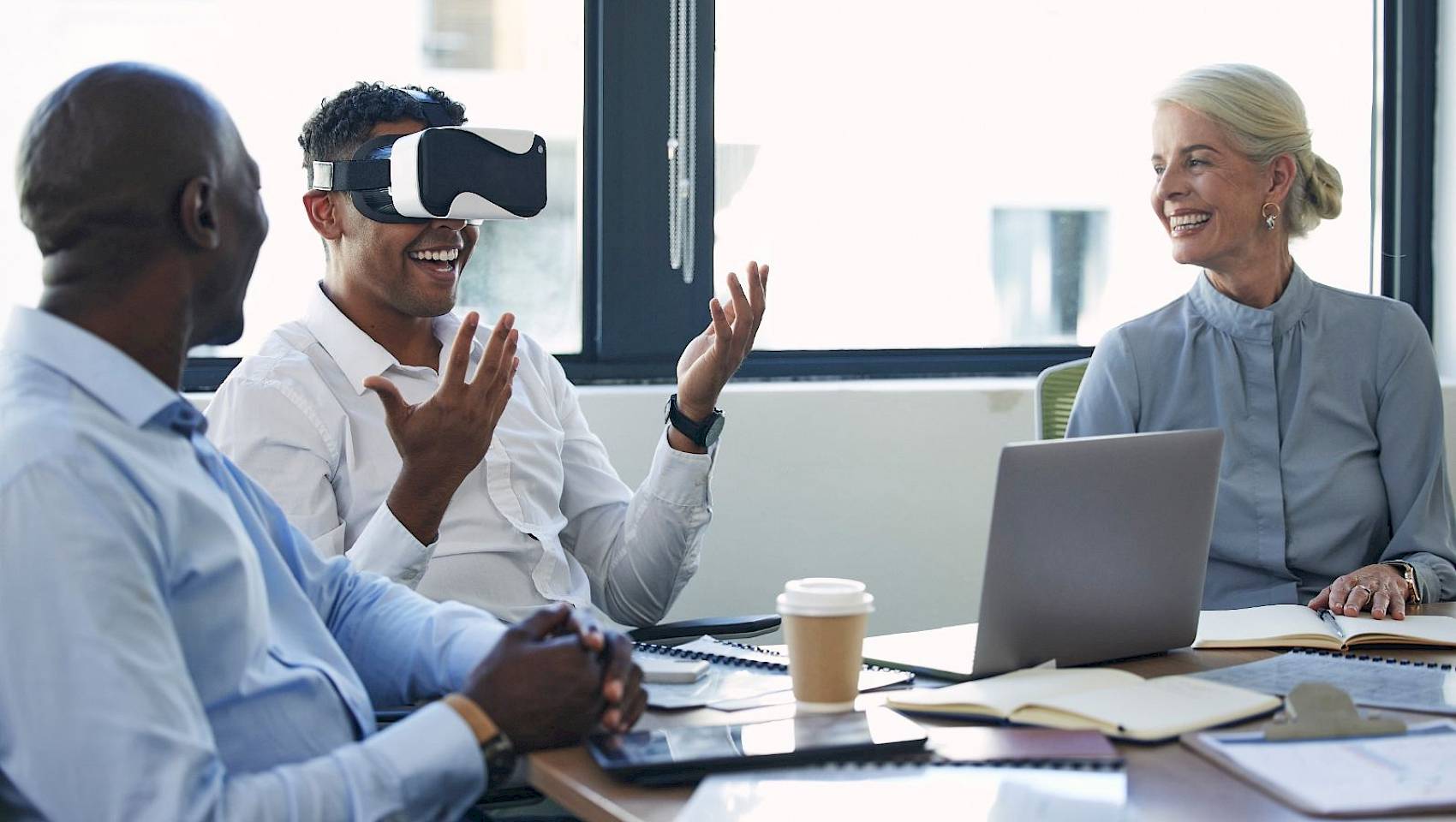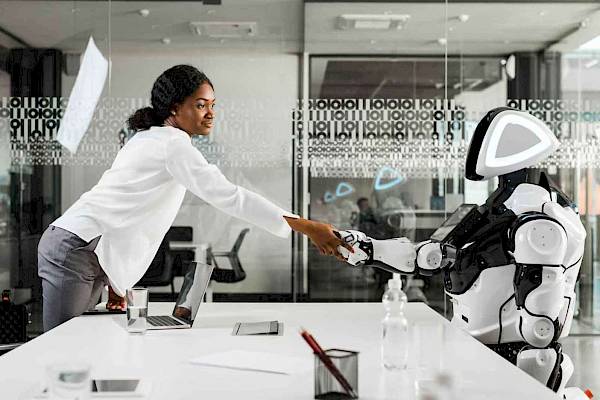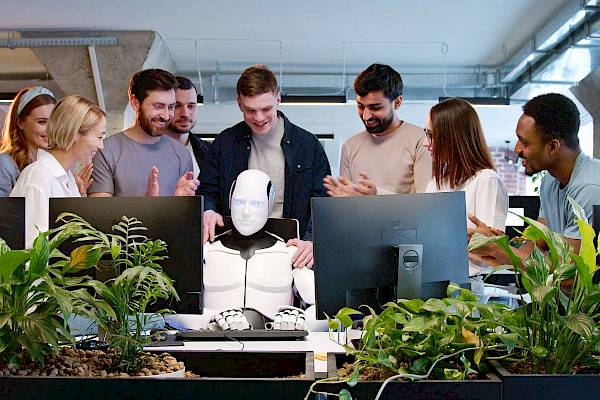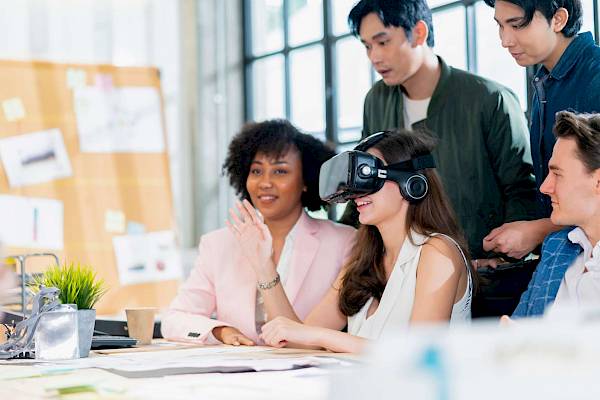In last month’s Target Tech Bytes, we explored the intriguing world of the Metaverse and touched on the technologies it would rely on to deliver immersive experiences. Augmented, Virtual and Mixed Reality will be crucial components to fulfil the Metaverse promise. So, let’s explore them in more detail.
What is Extended Reality?
In a world of limitless technological advances, the concept of reality itself is evolving. Extended Reality (XR) is a collective term incorporating three different but very much linked technologies: Virtual Reality (VR), Augmented Reality (AR), and Mixed Reality (MR).
Each of these technologies uniquely modifies our view of reality by creating an environment or experience that combines virtual and physical worlds, using a computer or wearable technology.
XR is another technology that is closing the gap between these two realms, offering new avenues of creativity, and potentially redefining how we interact with the digital world.
Augmented Reality
AR is already part of day-to-day life. It’s disrupted a range of industries from retail to gaming. So, what is it?
AR is an interactive experience that enhances reality by overlaying digital content onto real-world environments, in real-time. Whilst the technology was invented years before, the term Augmented Reality was coined in 1990 by Boeing researcher Tim Caudell.
The first functional AR system was created in 1992 and called ‘Virtual Fixtures’. It allowed military personnel to virtually control and guide machinery, assisting with training their US Air Force pilots.
Virtual Reality
Unlike AR where the real world is enhanced with digital objects, VR creates a three-dimensional (3D), computer-generated environment which fully immerses the user into a self-controlled, simulated scenario. It can deceive your senses into thinking you’re in a different world.
Devices such as virtual reality headsets and controllers allow users to interact with the virtual world they’re inhabiting.
Despite previous attempts, one of the earliest examples of virtual reality can be traced back to 1968 with Ivan Sutherland’s ‘Sword of Damocles’. The computer scientist created a headset that allowed users to view computer-generated graphics overlaid onto real-world objects.
Computer technology became more affordable to the general population from the 1980’s, paving the way for the development of VR technology and the hardware required to use it.
Mixed Reality
Mixed Reality is a dynamic fusion of the real and digital world and sits somewhere between AR and VR. Like AR, digital content is seamlessly overlaid with the user’s environment in real-time. However, with MR you can interact with both the digital content and the physical world, all without removing your headset. It’s opening a new world of creative and interactive experiences.
The term Mixed Reality was introduced in 1994 by Paul Milgram and Fumio Kishino in their paper ‘A Taxonomy of Mixed Reality Visual Displays’. It explored the concept of a virtuality continuum.
XR today
As the tech landscape evolves at pace, the development of AR, VR and MR is no different. Most XR applications require a device with a camera, sensors, and display to allow users to experience the technology.
Smartphones, headsets, and tablets are all examples of the hardware needed to use XR applications. In 2022, according to Finder, 84% of adults in the UK (United Kingdom) own a smartphone. With more and more people depending on their mobile devices, the adoption of XR technology is on a steep trajectory.
Global immersive technology was valued at $22.5 billion in 2022, and this is projected to rise to just under $50 billion by 2026.
VR headsets such as the Oculus Quest gives users access to immersive games and offers a range of other XR applications to take advantage of. Such as completing a flight simulator, attending a virtual theatre, or even attending a sports match in another country, all while in the comfort of your home.
Application examples
Examples of XR applications that many will be aware of include:
- Filters – with the help of XR, the Snapchat app can impose filters onto users’ faces, turning them into anything from a dog to an elderly person
- Gaming - first introduced in 2016, Pokémon Go instantly became popular amongst all age groups. Using XR technology, the aim is for users to explore the real world where Pokémon characters appear on a map to be collected
- Interior decoration apps – firms such as Ikea are using XR to allow their customers to virtually ‘try before they buy’. Users can impose a digital image of an item of furniture into their physical world, such as a sofa in the living room to get a feel for how they would look in their own home
- Healthcare and surgery – the use of XR in healthcare is growing. Medical professionals use groundbreaking technology to aid with surgical procedures, planning and, diagnosing and treating complex health issues such as dementia.
Are we losing the human touch?
While advancing technologies bring considerable benefits to many industries, an automated or virtual solution can lack the emotional intelligence and experience humans can offer. A significant concern is that technology is diminishing human connections that are still very much needed for some, particularly elderly or vulnerable customers as well as those with technology access issues.
Research by Foolproof reveals that 46% of customers still prefer human interaction in banking, and 29% would like to see more high street branches.
Though it can break down geographical barriers and support access to services, technology can isolate and exclude communities. Firms must strike the right balance between embracing innovation and providing good old-fashioned human-to-human customer service.
XR in Financial Services
Over the last few years, Financial Services firms, like many industries, have had to adapt to a ‘new normal’. They’re finding new ways to serve their customers whilst still providing a personalised experience.
As XR continues to expand and evolve and smart phones enabled with the required platforms, FinTech's and banks will need to make the decision as to whether to embrace innovation and transformation to become lead runners in new technology.
XR has the potential to enhance various aspects of financial services. Some examples are:
- Virtual branches and offices: With many branches being closed, a virtual branch could be the solution to reigniting the face-to-face customer experience, with a twist. This solution would also appease todays digitally native customers who would feel more comfortable with online assistance
- Enhanced customer service: Interaction through holographic agents or avatars in real time can help banks deliver a personalised, human-like service, all whilst reducing costs and waiting times
- Customer acquisition and engagement: Offering customers new and engaging ways to interact with their accounts and services, such as visualising spending and even incorporating gamification to aid savings goals. Personal banking becomes less of a formality and more of an experience
- Customer education: XR can immerse the customer in the onboard experience, engaging them in the education of products and services they are being offered and add value by upskilling customers on financial literacy, investment strategies and cybersecurity
- Training: employee training could become more realistic and engaging with the use of XR applications simulating various scenarios such as risk, fraud, and regulatory requirements
- Data analysis: XR can help simplify complex data sets and models by creating immersive data dashboards where you can explore and manipulate data in a 3D space.
New technology comes at a price, the investment in XR technology would be costly in both monetary and resource terms. Financial services firms need to weigh up the benefit of innovation with the risks of disruption. Though perhaps the biggest risk of all could be being left behind by challengers and market leaders as they embrace the possibilities of XR.
Who’s using XR technology?
In financial services and banking, the adoption of XR technology is on the rise. Some examples of firms taking the ‘innovation bull’ by the horns:
- Mastercard launched a new AR app in 2020 to deliver a multi-sensory experience for its customers. The app gives customers the opportunity to explore the benefits of their Mastercard in a 360-degree virtual environment
- Bank of America uses immersive VR technology to deliver training to its employees in financial centres nationwide. It allows them to practice a range of complex tasks and customer interaction simulations through a virtual environment
- BNP Paribas launched an AR experience that gives their customers around the world a virtual in-person banking experience from their own home. Customers can interact with digital versions of bank staff to discuss their banking needs.
How can XR benefit your business?
XR is offering a new era of possibilities. As technology advances and XR becomes more accessible, exploring the possibilities it can introduce to your business early could place you ahead of your competitors.
Sources
https://www.finder.com/uk/mobile-internet-statistics
https://www.techtarget.com/whatis/definition/augmented-reality-AR
https://www.g2.com/articles/history-of-augmented-reality
https://www.simplilearn.com/tutorials/artificial-intelligence-tutorial/what-is-virtual-reality
https://www.precedenceresearch.com/immersive-technology-market
https://www.mastercard.com/news/press/2020/january/mastercard-launches-augmented-reality-experience-to-bring-card-benefits-to-life/
https://newsroom.bankofamerica.com/content/newsroom/press-releases/2021/10/bank-of-america-is-first-in-industry-to-launch-virtual-reality-t.html
https://group.bnpparibas/en/news/vivatech-bnp-paribas-announces-augmented-reality-banking-experience
https://fintech.global/2023/07/12/46-of-banking-customers-miss-human-interaction/#:~:text=Foolproof's%20new%20research%20reveals%20a,desire%20more%20high%20street%20branches.




